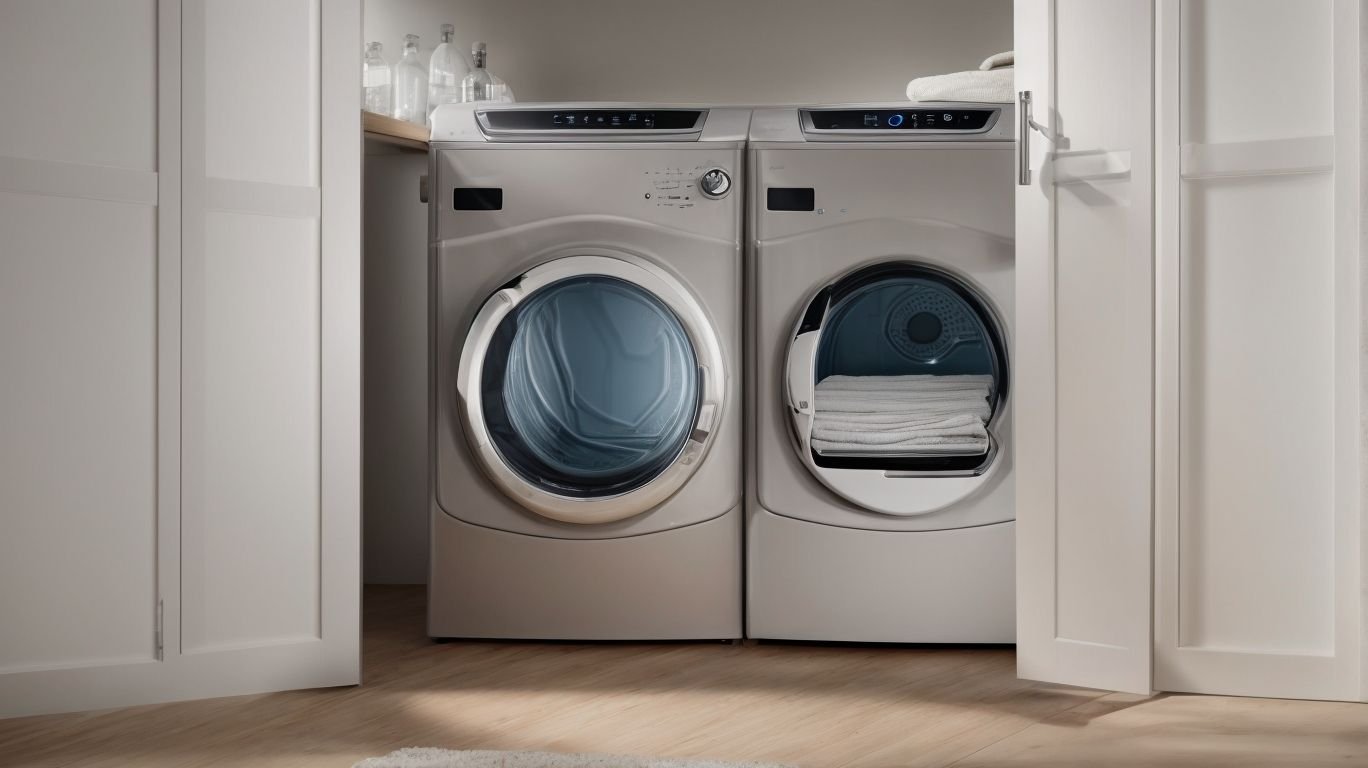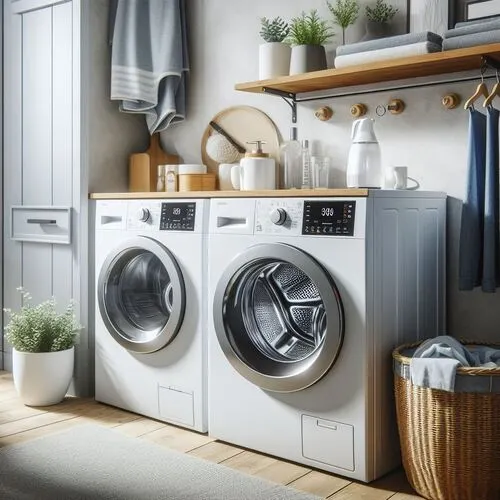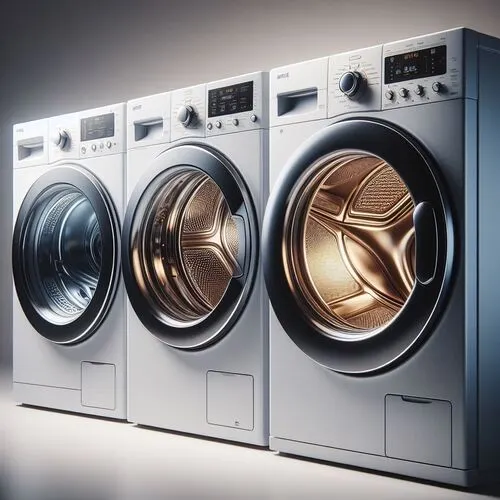Whirlpool Cabrio dryer not heating
Is your Whirlpool Cabrio dryer not producing enough heat? This is a common issue that can be caused by a faulty heating element or a clogged dryer vent. In this article, we will explore the possible causes of your dryer’s heating problems and offer useful tips and solutions for Whirlpool Cabrio Dryer Troubleshooting and resolving the issue. Whether you plan on fixing it yourself or hiring a professional, we’ve got you covered. Keep reading to learn how you can prevent your Whirlpool Cabrio dryer from experiencing heating problems in the future.
Understanding the Whirlpool Cabrio Dryer
The Whirlpool Cabrio Dryer is a popular laundry appliance known for its reliable performance and efficient drying capabilities. It is designed to meet the needs of modern households, offering advanced features and a user-friendly interface for seamless operation.
The Cabrio Dryer is equipped with state-of-the-art sensors that automatically adjust the drying time and temperature to prevent over-drying and minimize energy consumption.
Its large capacity allows for drying bulky items and big loads, saving time and effort. The Wrinkle Shield feature intermittently tumbles clothes after the cycle ends, ensuring they remain wrinkle-free.
With its sleek design and quiet operation, the Whirlpool Cabrio Dryer adds a touch of modern elegance to any laundry room while revolutionizing the way people do their laundry.
What Could Be Causing Your Dryer Not to Heat?
If your Whirlpool Cabrio dryer is not heating, several potential issues could be causing this malfunction, affecting its drying performance and efficiency. It’s crucial to identify the root cause of the heating problem to initiate the appropriate troubleshooting and repair measures.
Faulty Heating Element
A faulty heating element in your Whirlpool Cabrio dryer can lead to heating issues, resulting in ineffective drying and prolonged laundry cycles. Addressing and resolving this component’s malfunction is essential to restore the dryer’s optimal performance and heat distribution.
The heating element is a crucial component of a dryer system, responsible for generating the necessary heat to efficiently dry clothes. However, if it malfunctions, it can result in inadequate heat output or no heat at all, leaving clothes damp and unsatisfactorily dried. In such cases, it’s essential to seek professional repair services to accurately diagnose the issue and replace the faulty heating element, ensuring optimal dryer performance.
Malfunctioning Thermal Fuse
A malfunctioning thermal fuse in your Whirlpool Cabrio dryer can disrupt the heating process, leading to heating issues and inadequate drying performance.
Understanding the role of the thermal fuse and addressing any potential malfunctions is crucial to ensure the dryer’s efficient operation.
The thermal fuse plays a vital role in regulating the dryer’s temperature and preventing overheating. This small but critical component acts as a safety mechanism by interrupting the electrical circuit when the dryer’s temperature becomes too high.
By doing so, it protects the dryer from potential fire hazards and damage. When the thermal fuse malfunctions, it can lead to excessive heating, resulting in unsatisfactory drying outcomes. Therefore, timely diagnosis and replacement of a faulty thermal fuse can help resolve heating issues and ensure optimal dryer performance.
Broken Heating Igniter
A broken heating igniter in your Whirlpool Cabrio dryer can contribute to heating issues, leading to inadequate heat generation and drying inefficiency. Identifying and rectifying any issues related to the heating igniter is crucial to restore the dryer’s heating functionality.
The heating igniter serves as the catalyst for initiating the heating process within the dryer. When it malfunctions, it disrupts the entire heating cycle, affecting the overall performance of the appliance.
Troubleshooting the igniter involves checking for continuity using a multimeter and ensuring it receives the necessary electrical power. Cleaning the igniter and its surrounding area can alleviate issues caused by dirt or debris. If troubleshooting proves ineffective, replacing the heating igniter with a compatible part is recommended to resolve heating concerns and optimize the dryer’s functionality.
Defective Gas Valve Solenoid
A defective gas valve solenoid in your Whirlpool Cabrio dryer can impede the flow of gas required for heat generation, leading to heating issues and compromised drying performance.
Identifying and addressing any issues related to the gas valve solenoid is essential for restoring the dryer’s heating capabilities. This component plays a crucial role in regulating the gas flow needed for heating. When the gas valve solenoid malfunctions, it disrupts the process, causing the dryer to underperform.
Common signs of a faulty gas valve solenoid include the dryer not heating up or taking longer to dry clothes. To rectify this, a professional repair technician can diagnose and replace the faulty solenoid, ensuring that the gas flow is restored, thus resolving heating issues.
Clogged Dryer Vent
A clogged dryer vent in your Whirlpool Cabrio dryer can impede the airflow necessary for effective heat distribution, leading to heating issues and prolonged drying cycles.
Addressing and resolving any obstructions in the dryer vent is crucial to ensure the appliance’s optimal heating performance.
This impediment can significantly affect the efficiency of heat circulation within the dryer, causing clothes to take longer to dry and potentially leading to overheating.
Regular maintenance, such as cleaning lint filters and inspecting the vent for blockages, is essential to prevent these issues.
Maintaining proper ventilation around the dryer and ensuring the vent exhausts outside the home without any restrictions further aids in optimizing the drying efficiency.
By taking these measures, you can improve the overall functionality of your Whirlpool Cabrio dryer, enhance its longevity, and ensure it operates at its best.
How to Troubleshoot and Fix the Issue?
When encountering heating issues with your Whirlpool Cabrio dryer, it’s essential to perform comprehensive troubleshooting and implement effective repair solutions to address the underlying causes. Proper troubleshooting and repair measures can restore the dryer’s heating functionality and ensure efficient drying performance.
Check the Power Supply
Verifying the power supply to your Whirlpool Cabrio dryer is a critical troubleshooting step when addressing heating issues. Ensuring a stable and adequate power source is essential for the dryer’s heating functionality and overall operational performance.
Without sufficient power, the heating element may not receive the necessary energy to generate heat effectively, leading to lukewarm or non-heating cycles. Checking the outlet voltage, circuit breakers, and power cord for any irregularities or damages is crucial.
Inadequate power supply can also strain other components, causing premature wear and tear. By addressing power supply issues promptly, you can potentially rectify heating problems and extend the lifespan of your Whirlpool Cabrio dryer.
Inspect the Heating Element
Thoroughly inspecting the heating element of your Whirlpool Cabrio dryer is essential to identify and address potential malfunctions contributing to heating issues. Proper inspection and repair of the heating element can restore the dryer’s heat generation capabilities.
The inspection process typically involves visually examining the heating element for any signs of corrosion, damage, or disconnection. Utilizing a multimeter to measure the element’s continuity and resistance can provide crucial insights into its functionality.
Addressing any identified issues, such as replacing worn-out coils or faulty connections, is imperative to ensure efficient heat production. Neglecting the condition of the heating element can prolong drying times, lead to overheating, or even result in complete heat loss, significantly impacting the appliance’s performance and energy consumption.
Test the Thermal Fuse
Conducting a comprehensive test of the thermal fuse in your Whirlpool Cabrio dryer is crucial to determine its functionality and potential contribution to heating issues.
Proper testing and potential replacement of the thermal fuse can address heating malfunctions effectively.
One way to determine if a dryer is experiencing heating issues is by inspecting the thermal fuse. This involves using a multimeter to test for continuity and ensure the electrical circuit is intact. If the thermal fuse fails this test, replacing it with a new one can restore the dryer’s heating functionality and prevent future problems with clothes not drying properly.
Testing the thermal fuse is an essential troubleshooting step for maintaining an efficient and dependable Whirlpool Cabrio dryer. By following this simple procedure, you can easily assess and resolve heating problems with your appliance.
Examine the Heating Igniter
Thoroughly examining the heating igniter in your Whirlpool Cabrio dryer is essential to identify potential malfunctions impacting the heating process.
Proper examination and potential repair of the heating igniter can restore the appliance’s heat generation capabilities.
The heating igniter plays a crucial role in initiating the dryer’s heating cycle by igniting the gas or heating element.
To begin the examination process, ensure the appliance is unplugged and the gas supply is turned off, if applicable.
Carefully detach the dryer’s access panel to locate the igniter. Check for any visible damage, such as cracks or breaks.
Utilizing a multimeter can help to measure the igniter’s resistance to determine if it is functioning within the expected range.
Taking these steps can effectively pinpoint and address issues with the heating igniter, promoting efficient dryer operation.
Verify the Gas Valve Solenoid
Verifying the functionality of the gas valve solenoid in your Whirlpool Cabrio dryer is crucial to ensure the proper flow of gas for heat generation.
Thorough verification and potential repair of the gas valve solenoid can address heating malfunctions effectively.
This troubleshooting measure involves carefully assessing the gas valve solenoid for any signs of wear, corrosion, or electrical issues.
A malfunctioning solenoid can disrupt the gas flow, leading to inadequate heating in the dryer.
By verifying and potentially repairing the gas valve solenoid, you can rectify heating issues and promote the appliance’s optimal performance.
This proactive approach not only ensures efficient drying but also contributes to the safety and longevity of your Whirlpool Cabrio dryer.
Clean the Dryer Vent
Thoroughly cleaning the dryer vent in your Whirlpool Cabrio dryer is essential to remove obstructions and ensure the smooth flow of air for effective heat distribution.
Proper vent maintenance can address heating issues and promote efficient drying performance.
This maintenance task is crucial as a clogged dryer vent can lead to overheating, longer drying times, and even fire hazards.
By regularly cleaning the vent, you can prevent lint buildup, which not only hampers the heating process but also poses a significant risk.
Neglecting vent maintenance can also cause strain on the dryer, leading to potential damage and reduced lifespan.
Therefore, integrating a routine vent cleaning schedule is vital for the optimal functionality and safety of your Whirlpool Cabrio dryer.
When to Call a Professional?
Knowing when to call a professional for repairs related to your Whirlpool Cabrio dryer’s heating issues is crucial in ensuring timely and effective solutions. Professional assistance may be warranted for complex heating malfunctions that require specialized expertise and technical intervention.
How to Prevent Your Whirlpool Cabrio Dryer from Not Heating?
Implementing proactive measures to prevent heating issues in your Whirlpool Cabrio dryer is essential for maintaining its optimal performance and longevity. Routine maintenance and care can mitigate potential malfunctions and ensure consistent heating functionality.
Frequently Asked Questions
Why is my Whirlpool Cabrio dryer not heating?
There could be several reasons why your Whirlpool Cabrio dryer is not heating. It could be due to a faulty heating element, thermostat, thermal fuse, or a malfunctioning control board.
How can I troubleshoot my Whirlpool Cabrio dryer not heating?
First, check to see if the dryer is getting power and the circuit breaker is not tripped. Then, inspect the heating element, thermostat, and thermal fuse for any signs of damage. If all these components seem to be working properly, it could be an issue with the control board.
Is it safe to replace the heating element on my Whirlpool Cabrio dryer myself?
It is recommended to have a professional technician handle the replacement of the heating element. This is because the dryer may need to be disassembled, and improper handling can lead to further damage or risk of electric shock.
What should I do if my Whirlpool Cabrio dryer is still not heating after replacing the heating element?
If you have replaced the heating element and the dryer is still not heating, it is possible that there is an issue with the thermostat or thermal fuse. These components should be tested and replaced if necessary.
How often should the heating element on a Whirlpool Cabrio dryer be replaced?
The heating element typically has a lifespan of 8-10 years. However, it can vary depending on usage and maintenance. If you notice any issues with heating or drying performance, it may be time to replace the heating element.
Can a clogged vent cause a Whirlpool Cabrio dryer to not heat?
Yes, a clogged or restricted vent can cause the dryer to not heat properly. This is because the hot air is not able to properly circulate, leading to longer drying times and potential overheating of the heating element. Regularly cleaning the vent can help prevent this issue.
Whirlpool Cabrio Dryer Reset
If you need to reset Whirlpool Cabrio dryer, follow these general steps. Ensure the dryer is in standby mode. Unplug the dryer from the power outlet. Wait for at least 60 seconds. Plug the dryer back in. Power it on and check if the issue persists.





